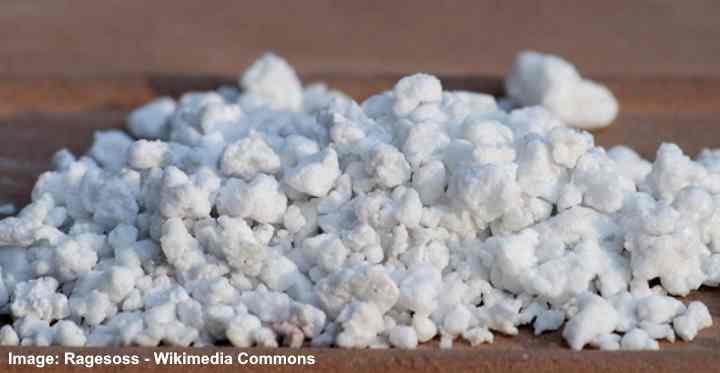Perlite helps to improve soil drainage and make it lighter by providing a natural substance. If your plants need to grow in a medium that drains well, you can safely add non-toxic perlite to the potting mix. These tiny white ball-like minerals are also good for aerating soil by mixing them in. Due to its capacity to retain moisture, you may also grow plants in perlite or use it for stem cutting.
You may still be curious about perlite, even though it’s commonly used for houseplants and garden plants. Is it safe to use perlite in your home, for example? Is it a good addition to organic gardening soils? So what are the advantages and disadvantages of using perlite as a potting mix? If you’ve ever wondered about using perlite in soil for growing plants, this article answers all of your questions.
What is Perlite?
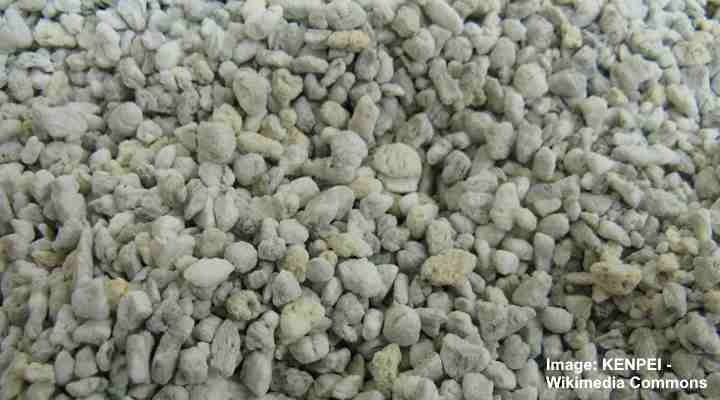
Perlite is a naturally occurring volcanic glass that is processed to become white and ultra-light. It improves soil quality. Perlite is a naturally occurring amorphous mineral that is black or dark gray in color. Perlite, on the other hand, looks different when it comes out of the ground than what you buy at the garden center.
Perlite is frequently compared to Styrofoam balls because of their appearance. Perlite is a bright white material that is exceedingly light. So, how did a super-light soil ingredient that most gardeners adore come from this naturally dense mineral? Because of the processing methods used to create perlite, it’s sometimes referred to as volcanic popcorn.
Perlite expands and “poops” when it is heated to 1,600°F (876°C) in a volcanic environment. It may grow up to sixteen times its original size. Horticultural perlite is very porous, as shown under a microscope.
Perlite absorbs moisture on its exterior, which is why it is so beneficial for plant soil. It allows excess water to drain from pot or gardening soil because it is lightweight and doesn’t change shape when pressure is applied. Perlite is inconspicuous, helps to maintain humidity, and has a neutral pH level.
What is Perlite Made of?
Volcanic rock or glass make up the majority of perlite. It develops when naturally occurring minerals solidify and entrap water in them as they cool after being molten lava. Perlite is a kind of rock or glass when found in its natural form. The raw volcanic rock or glass is heated to produce white lightweight perlite. When heated, the moisture in the mineral expands and turns the dense mineral into perlite, which is a lightweight white product.
Silicon dioxide, which is also found in quartz and sand, is the primary component in perlite. Aluminum oxide, sodium oxide, potassium oxide, iron oxide, magnesium oxide, and calciumoxide are also present in perlite. It’s also got a 3–5% water component, which is why it “poops.”
Uses of Perlite

Perlite is used to improve soil drainage and aeration when added to potting soil. Perlite helps to promote aeration, drainage, and soil compaction by keeping the soil loose. Perlite may also be utilized to generate soilless mixtures and start cuttings for hydroponic plant cultivation.
Perlite can be used safely as a soil amendment if you’re growing houseplants with it. Loam, peat moss, and perlite are the primary ingredients you’ll need. Since it retains the right combination of oxygen and moisture, this sort of potting soil is ideal for indoor plant cultivation in containers.
Perlite is utilized in the construction business as insulation, making cement, and drywall panels. It is also a useful soil amendment.
What Does Perlite Do for the Soil?
Perlite may help you overcome a variety of plant growth problems, both indoors and outdoors. Light, airy, and drains well despite being a perlite soil medium. Root rot, fungal infections, and bacterial illnesses are all prevented by this kind of soil. Perlite may help with the following soil problems:
- To prevent water from pooling on the surface, perlite loosens up hard clay soil.
- Perlite improves oxygen and nutrient availability to roots by aerating any kind of soil.
- Roots grew more easily when they are in perlite.
- Since it protects the soil from temperature changes, perlite prevents plant stress.
- Perlite does not degrade over time.
- Pots, patio plants, window boxes, and decorative containers all benefit from perlite as a soil medium.
How to Use Perlite in the Garden
If you have soil drainage issues, perlite is a cost-effective and simple way to improve soil quality in your yard. Puddles will develop, or excess moisture will stay in the ground, if your garden soil is mostly clay. Perlite allows plant roots to grow better than drainage, and it helps lighten garden soil.
Beneficial insects and worms are able to stay healthy and productive in Perlite soil amendment. Perlite may be used in a variety of ways to grow grass, plants, and trees in your yard.
- Vegetable and flower beds—To conditioning the soil for growing vegetables or flowers, work in a 4″ (10 cm) layer of perlite in 12″ (30 cm) of soil. Work in peat moss if the ground is poor-quality.
- Raised beds—To avoid water pooling and improve drainage in raised beds, use coarse perlite to amend the soil.
- Lawns—Spike or plug your lawn with perlite to improve drainage and enhance water flow.
- Growing trees or shrubs—Mix one-third soil, one-third perlite, and one-third peat moss to make a soil combination. Use perlite soil mixture for your growing medium if you want to dig a hole where you want to plant your tree or shrub.
What Type of Perlite to Use in Your Garden?
Coarse perlite, medium perlite, and fine perlite are the grades of white Styrofoam-like balls that we call perlite. You should select the appropriate kind of perlite for your garden or pots based on how much you want to change the soil. In garden centers or stores, you may choose from three distinct types of perlite:
- Coarse perlite—It’s the best perlite for thick, heavy soil and is the most common sort. Soilless growing media like orchids and succulents can be used with this form of perlite.
- Medium perlite—Potted plants and containers are the most frequent application of medium grade perlite.
- Fine perlite—If you want to root cuttings or start seeds, use light-grade perlite. Finding bags of this sort of perlite, on the other hand, may be challenging.
How to Use Perlite in Hydroponics
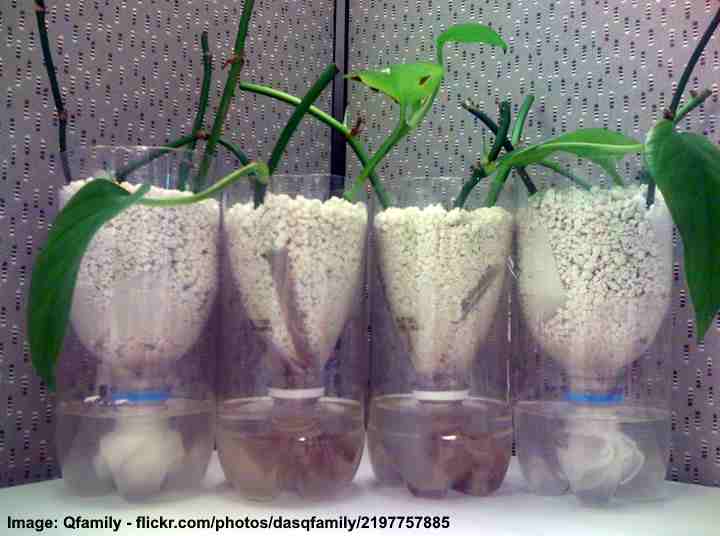
It’s also a good idea to utilize perlite as a hydroponic growing medium because of its small white light rocks. Perlite is one of the best hydroponic solutions to use because of its neutral pH levels, lack of nutrients absorption, and cheap cost. Fine-grade or medium-grade perlite is all you need to bring with you.
You can use perlite with other ingredients because it dries out quicker than some other hydroponic mediums. For hydroponic growing, a 50-50 combination of perlite and vermiculite, for example, may be preferable than plain perlite.
How To Use Perlite for Rooting Cuttings
Since it is light and retains moisture, perlite is an excellent growing medium for rooting cuttings. Perlite is beneficial for growing plant cuttings since it provides moisture and oxygenates roots. This results in a light, porous medium that is never waterlogged. It is simple to root stem cuttings in perlite.
In perlite, root cuttings must be done in the following order:
- A small pot should be half-filled with wet perlite.
- To compact the perlite granules a little, gently press them down.
- Fill the perlite medium with a single cutting of plant.
- Fill the pot with moist perlite and gently press down on the cutting to fill any remaining space.
- In a bright, sunny location, set the pot.
- To avoid the perlite from drying out, lightly mist it every day. Never let the medium become too moist or wet, however.
- Transfer the cuttings to a new, bigger container with the necessary potting mix after they have rooted.
Another option is to put cuttings in a Ziploc plastic bag and use perlite as a rooting agent. This is what you should do to root cuttings in this way:
- Fill a one-third full Ziploc bag with damp perlite.
- Fill the bag with air, seal it, and place your cuttings in the perlite.
- Place the bag in a well-lit area, but keep it out of the sun.
- To make sure the perlite is still wet, check the rooting bag every so often.
- Transfer to a pot for growing once your cuttings have rooted.
Advantages of Perlite
When it comes to cultivating houseplants or improving garden soil, perlite has a slew of benefits. Organic and traditional gardeners can use it safely because it’s a natural, sterile substance. Why use perlite soil combinations in the first place? Perlite has five advantages:
1. Perlite is reusable
Unlike other soil amendment components, perlite does not break down in the soil. When you repot your houseplants, it retains its shape, so you can reuse it. If your plant had a disease issue, it’s generally not recommended to reuse perlite. Perlite can be sterilized, but it’s recommended that you throw away the diseased soil along with the perlite and begin over.
2. Perlite is neutral in pH
The chemical makeup of soil isn’t changed by adding perlite. If you need acidic or alkaline soil, perlite is a great option. The acidity or alkalinity of the soil type determines how perlite reacts.
3. Perlite doesn’t absorb nutrients
Perlite has the benefit of not robbing plants of nutrients in the soil. Coco coir, rock wool, and pebbles are examples of soil amendments that may absorb nutrients. Therefore, all you have to do is rinse perlite and utilize it again to reuse it.
4. Perlite is inexpensive
Perlite is a popular material with gardeners and houseplant enthusiasts because of its low cost. Of course, if you only have a few houseplants, the expense might not be that significant. The inexpensive cost of high-quality perlite, on the other hand, is a huge advantage if you need to improve soil texture in your yard or look after many indoor plants.
5. Perlite aerates soil and improves drainage
Perlite is a great option for soil because it helps prevent a variety of issues. Perlite improves soil drainage, oxygenates the earth, and prevents soil compacting. It’s a wonderful addition to any garden.
Disadvantages of Perlite
When using perlite indoors or in your yard, are there any downsides? Perlite usage has a few ecological implications.
1. Perlite is from a non-renewable source
Perlite is extracted from a non-renewable resource. While there are enough resources to support hundreds of years, they are gone in the blink of an eye. This disadvantage may be mitigated by the fact that perlite is reusable.
2. Perlite dust could be hazardous
Perlite dust may cause irritation and isn’t good for your respiratory system, which is a concern when using it. When using perlite to pot houseplants to improve garden soil, always wear a respirator and goggles. Certain kinds of high-grade perlite are marketed as “virtually dust-free.”
3. Not suitable for all plants
One of the most effective soil amendment materials is perlite. Plants, on the other hand, do not benefit from perlite unless it is fine or medium perlite. Perlite does not grow as well on plants with strong root systems like chives or mint.
Perlite vs. Vermiculite
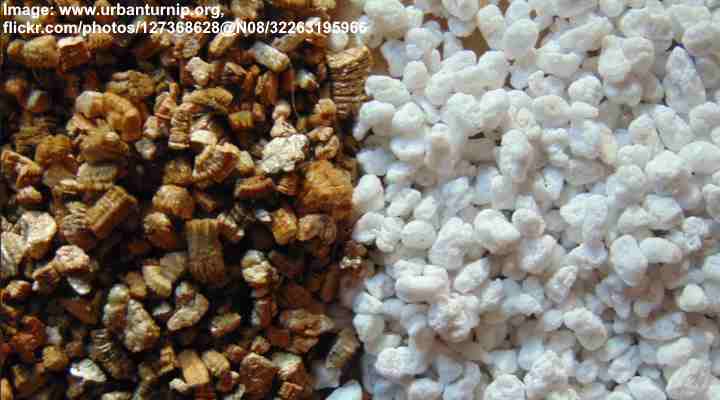
Perlite and vermiculite are natural soils that are used as soil aeration aids. The two, on the other hand, have slight differences. Vermiculite isn’t the best material for well-draining potting mixes because it tends to hold onto more moisture. For plants that prefer moist soil, vermiculite may be a better option than perlite.
Perlite vs. Pumice
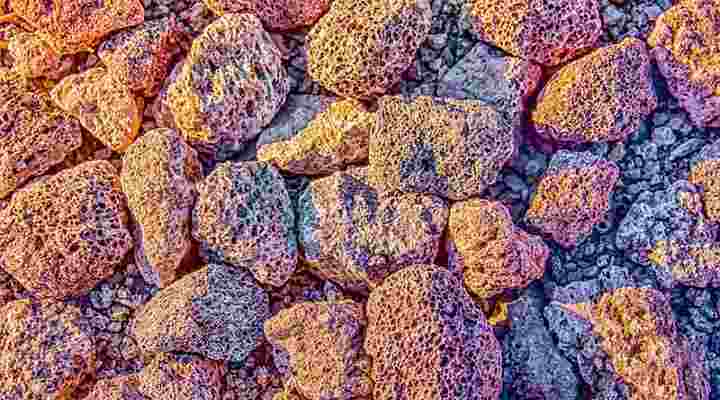
Perlite and pumice are volcanic rocks that are produced from molten lava. Both materials have a porous structure that aids in soil drainage. Because it weighs more, many gardeners recommend using pumice rather than perlite for tall plants. Perlite is less expensive than pumice when it comes to price.
Does Perlite Break Down?
Ingredients like bark, coco coir, or compost degrade over time in the soil, whereas perlite does not. Perlite remains in the garden or houseplant soil when you work it in. As a result, until you remove it, it will continue to retain essential moisture and aerate soil or lawns.
Is Perlite Organic?
Since it is totally natural and not a synthetic element, perlite is safe to utilize in organic gardening. Perlite is on the list of approved organic farming materials, according to the United States Department of Agriculture (USDA). Due to the fact that perlite is an inorganic material, there is no chemical processing involved in its production.
This, on the other hand, only pertains to the fact that perlite is not a living substance. Non-organic material is the name for what it isn’t made up of.
Can You Grow Plants in Just Perlite?
Plants can be grown without soil using perlite. Perlite retains some moisture and allows oxygen to reach the roots as a soilless growing medium. Perlite, on the other hand, floats in excess water and is therefore unsuitable for all plants. Mix perlite with peat moss if you want to utilize it as a soilless growing medium.
Is Perlite Harmful?
Perlite is primarily made up of silica, which is also the major component of sand. When potting or repotting plants, you can handle perlite granules with ease. In agriculture and building, perlite has a variety of uses. Permite has no harmful consequences, according to studies on the subject. Breathing in the dust or swallowing perlite, on the other hand, is considered a “nuisance.” When dealing with perlite, wear a face mask at all times.
Where to Buy Perlite
Perlite can be found in a variety of home improvement and garden outlets. It’s also available at hydroponics shops. Horticultural perlite is available in large or tiny quantities from a variety of online stores.
